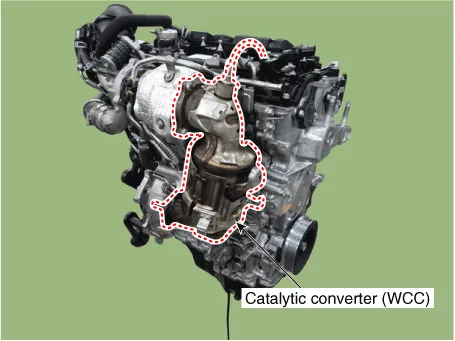Hyundai Elantra (CN7): Exhaust Emission Control System / Catalytic Converter
Description and operation
| Description |


Repair procedures
| Removal |
| 1. | Remove the exhaust manifold. (Refer to Engine Mechanical System - "Exhaust Manifold") |
| 1. | Remove the Center Muffler. (Refer to Engine Mechanical System - "Center Muffler") |
| Installation |
| 1. | Install in the reverse order of removal. |
DescriptionExhaust emissions (CO, HC, NOx) are controlled by a combination of engine modifications and the addition of special control components.Modifications to the combustion chamber, intake manifold, camshaft and ignition system form the basic control system.
Description and operation DescriptionContinuous Variable Valve Timing (CVVT) system advances or retards the valve timing of the intake and exhaust valve in accordance with the ECM control signal which is calculated by the engine speed and load.
Other information:
Hyundai Elantra (CN7) 2021-2026 Service Manual: Heater Core
Repair procedures Replacement1.Disconnect the negative (-) battery terminal. 2.Remove the heater and blower assembly.(Refer to Heater - "Heater Unit") 3.Remove the heater core cover (A) after loosening the mounting screws.4.Pull out the heater core (A) from the heater unit.
Hyundai Elantra (CN7) 2021-2026 Service Manual: Description and operation
DescriptionRear Corner Radar is a system that measures the relative speed and distance from the following vehicles by using two electromagnetic wave radar sensors attached to the rear bumper, and detects any vehicle within the blind spot zone and gives off alarm.
Categories
- Manuals Home
- Hyundai Elantra Owners Manual
- Hyundai Elantra Service Manual
- Instrument Cluster
- General Tightening Torque Table. General information
- Vehicle Information
- New on site
- Most important about car
